A fine handy Camera before Leica born 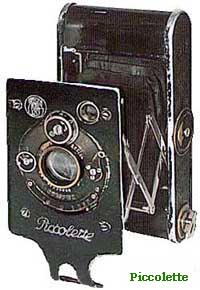 Motivation
MotivationA fine gift reached from U.S friend of photographer in some morning. A camera looked like very old came out from the parcel. It is normal way that we should investigate a camera from documentation when we got an unknown camera. I could know many things about vintage or classic cameras while investigating. It is much interesting in such old camera than Leica I used to. This is a report of investigating and taking pictures by it. What's their history This camera was launched in 1920, made in Stuttgart Germany. It was several years before Leica born. The camera name is Contessa Netter Piccolette. A Vest Pocket Kodak(VPK) of same style camera had been sold since 1912 by USA Kodak, one of the best seller camera on the history. A Pearlette was also appeared soon after the Piccolette by Konishiroku in Japan. When the Zeiss Ikon was formed in 1926, the Piccolette camera was continued as their standard product. This company united the Contessa Nettel and other different optical companies under the direction of the government of Germany. Its fine camera... This camera is fine bellows roll film camera and was only 320g in weight, 120x64x24 cm in size when folded. You could really take it in your pocket. There were many so-called Pocket cameras on that age and they were so big that I would wonder what kinds of pocket all about. The frame size on the film is 4x6.5 cm, third times of 35 mm camera in area. The V-H ratio is 1:1.625, it is much wider than normal 35 mm frame which is 1:1.5. One roll can take 8 exposures. There were more small camera in fashion, which used a half size of that frame. The film had a paper on its back, where there were frame numbers printed on. You could wind the film by knob looking at the red window where the next number would be appeared. What is lens... The Piccolette had been provided various lens selection, they were a single element lens, Nettar or Nova anastigmat lens and Tessar lens. 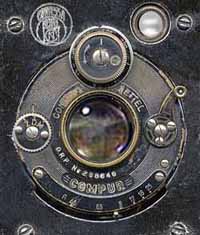 The Piccolette(photo) has a fine Tessar F4.5 75 mm lens. The original Tessar f6.3 was made by Carl Zeiss Jena Germany in 1903. They said it was more sharp than Triplet anastigmat lens, which was in fashion in that age. The Tessar or Tessar type lens are still manufacturing even today after almost a century past since it was first made. The famous Elmar 5 cm f3.5 of Leica Camera was also the Tessar type lens. The Piccolette(photo) has a fine Tessar F4.5 75 mm lens. The original Tessar f6.3 was made by Carl Zeiss Jena Germany in 1903. They said it was more sharp than Triplet anastigmat lens, which was in fashion in that age. The Tessar or Tessar type lens are still manufacturing even today after almost a century past since it was first made. The famous Elmar 5 cm f3.5 of Leica Camera was also the Tessar type lens.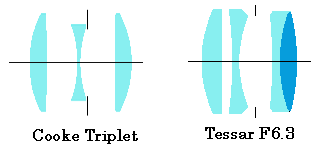 The Triplet lens had more old in history, it was made by H.D.Taylor of Thomas Cooke & Son in 1893. It was famous as a Cooke Triplet lens. Shutter excellent... The used shutter of this Piccolette is so-called Dial set Compur, it gets 1, 1/2, 1/5,1/10, 1/25, 1/50, 1/100, 1/300 sec. shutter speeds. Z(time) and D(bulb) are also provided. Though it has been 75 years past since it was made, it works accurate even today. The aperture values are shoen as F4.5, 6.3, 9, 12, 18, 25 sequence, different from popular sequence of F4, 5.6, 8, 11, 16, 22 as now they are. Many Compur shutter were made by Deckel Germany, established 1905, and they were always keeping top grade shutter functions. A combination of Tessar lens and Compur Shutter was attached to as a high grade camera of any manufacturers for long time. The Compur Shutter developed as a Dial set Compur, a Rim set Compur, a Compur Rapid and a Synchro Compur of post War version. A Finder... 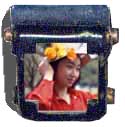 A shortage of Classic cameras I always felt is a finder. They were all very poor even in the Leica camera before Leica M3 appeared. The finder of early Piccolette was only the reflect finder, did not have even a wire frame finder. A reflect finder is configured with small lens, mirror and grand glass. There were some finder used small lens instead of grand glass as we see a Brilliant TLR or Kodak Six-twenty TLR. It takes very clear images as a view finder. the reflect finder usually could turn 90 degrees in order to use vertically or horizontally.
A shortage of Classic cameras I always felt is a finder. They were all very poor even in the Leica camera before Leica M3 appeared. The finder of early Piccolette was only the reflect finder, did not have even a wire frame finder. A reflect finder is configured with small lens, mirror and grand glass. There were some finder used small lens instead of grand glass as we see a Brilliant TLR or Kodak Six-twenty TLR. It takes very clear images as a view finder. the reflect finder usually could turn 90 degrees in order to use vertically or horizontally.A first fine finder was built in Laeica M3 launched in 1954. Wanted to shoot... This camera was an ornament for a while. Looking at it every days, I wished to take photographs. What is the film? 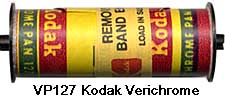 This camera requires a 127 film that almost discontinued. It is possible to get one which is made even now by Croatia(Ex. Yugoslavia) , but ISO100 or 200 mono-chrome only. Also a Kodak Verichrom(VP127,ISO200) might be in the market. I got a Yugoslavia's old 127 ISO 100 film from friend of mine but it had been expired six years ago. It made not so good result because of expired film, but focus looked so sharp.
This camera requires a 127 film that almost discontinued. It is possible to get one which is made even now by Croatia(Ex. Yugoslavia) , but ISO100 or 200 mono-chrome only. Also a Kodak Verichrom(VP127,ISO200) might be in the market. I got a Yugoslavia's old 127 ISO 100 film from friend of mine but it had been expired six years ago. It made not so good result because of expired film, but focus looked so sharp. As I got a spool left, then I tried to cut a current 120 film for it and re-spooled. Then I got a nice photo this time. I tried to cut the KODAK TMAX100 and Fuji NEOPN SS, it was no problem with them. I still keep a darkroom for black & white processing. It is often hard to get a proper film for an old camera, I can at least process a black & white film. So I can test the most of camara. Once I made as a sheet film by cutting from 120 Brawnie rool film, then took it into the film chamber directly for only one shot. As far as I used the black & white film, I could do that way for sample work. I also enjoy a image on my PC by use of film or image sccaner these day.
As I got a spool left, then I tried to cut a current 120 film for it and re-spooled. Then I got a nice photo this time. I tried to cut the KODAK TMAX100 and Fuji NEOPN SS, it was no problem with them. I still keep a darkroom for black & white processing. It is often hard to get a proper film for an old camera, I can at least process a black & white film. So I can test the most of camara. Once I made as a sheet film by cutting from 120 Brawnie rool film, then took it into the film chamber directly for only one shot. As far as I used the black & white film, I could do that way for sample work. I also enjoy a image on my PC by use of film or image sccaner these day. To enjoy a Classic cameras... One day I took this camera up in front of young ladies, they said "looks nice camera, you have!" and posed themselves for my old camera. It is just fun taking photographs by such an old camera. I enjoyed repairing and investigating it, it had many problem though. (T. Kubo, a Student of Classic Camera, Tokyo) Related Web Site |
Mail to Editor